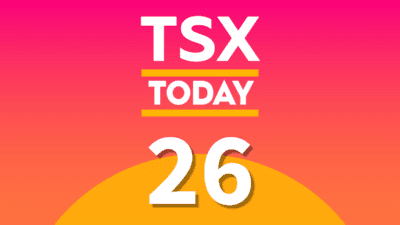Aritzia Inc. (TSX:ATZ) is one of the few Canadian IPOs to come into the market of late. Investors need to know what the long-term outlook is for this stock. In short, the company’s dual-class share structure and operating environment make the future seem very bleak. Here’s more.
Canadian IPO supply and demand has led to dual-class share structure
In assessing the strength of an IPO, analysts look at a wide range of factors to determine how the stock will be received, and what the potential demand will be from its investor base. IPOs are typically pitched to an institutional investor base first, and the rest of the offering gets spread around to non-institutional or a retail investor base.
The IPO market in Canada has been dreadfully slow. An IPO of this size in 2016 considered by many to be a “unicorn.” Sectors which have traditionally provided the lion’s share of IPOs in Canada, such as oil and gas and mining, have been hit hard by the recent downward pressure on commodity prices.
Many high-profile analysts such as Kevin O’Leary have asserted that the timing may be perfect for a Canadian retailer IPO, but he has warned, “I’m not even looking at this deal because it has a dual voting class share [structure].”
The lack of available deals in the Canadian IPO market means that Aritzia was given a chance that Mr. O’Leary asserts, “In normal times you would have never gotten this deal done … The bankers feel it has been so lean and mean out there, so few IPOs, that maybe they can get this one done with a more retail investor base.”
Many institutions may not even consider the deal outright due to corporate governance requirements opposing dual voting class share structures. When smart money is actively avoiding a stock, we take notice.
The supply and demand discrepancy currently plaguing the Canadian stock exchanges has resulted in this specific IPO moving forward with the IPO being structured as a dual voting class share deal–a huge red flag for investors.
Management has no skin in the game
This red flag in the form of a dual-class share structure is further exacerbated by the fact that management is essentially taking money off the table with this deal. Of the approximately $460 million raised, the vast majority of the money (about $400 million) will be split between the founder and current CEO Brian Hill and Berkshire Partners, which own a majority stake in the company; the majority of the rest of the funds will be allocated to the syndicate that put the deal together.
The retail business will not get any significant money from this IPO.
Investors like to know that their equity may be put to work and add value to the firm. In this case, the funds raised have a neutral effect on the value of the company and this adds additional risk to the equity offering.
Shareholders have no power
The new dual-class voting structure adds another level of complexity and risk to this IPO, since approximately 97% of the voting rights of this company will continue to be held by Mr. Hill and Berkshire. This means that unlike a traditional publicly traded company, if the shareholders are unhappy with management or the operating performance of the business, management is able to continue to make the same errors in perpetuity.
There are exceptions to the rule (think Google), but the fact remains that the vast majority of dual-class stocks underperform over time, especially in the Canadian market.
Sauder School of Business finance professor Kai Li has looked at this deal and said very plainly, “People who bought shares last week won’t have any (voting) power … You better hope the founder will make the right decisions. But cashing out for $400 million, what’s the incentive going forward?”
Long-term volatility
Typically, large institutional investors hold large chunks of stock for long periods of time, adding stability. The lack of such stability will likely mean higher than normal long-term volatility. Such long-term volatility due to the potential for rapid “changing of hands” depending on retail investor sentiment is a huge consideration for a shareholder of Aritzia.
Performance
This stock opened at $16 a share and traded as high as $19.40 a share after opening. Currently, the stock closed Monday’s session at $18.71.
The future performance is uncertain. For the long-term investor such as myself, this is a stock I will not touch.








